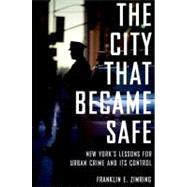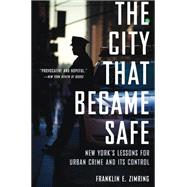The City that Became Safe New York's Lessons for Urban Crime and Its Control

The City that Became Safe New York's Lessons for Urban Crime and Its Control
- ISBN 13:
9780199844425
- ISBN 10:
0199844429
- Format: Hardcover
- Copyright: 11/23/2011
- Publisher: Oxford University Press
- Newer Edition
New From $61.25
Sorry, this item is currently unavailable on Knetbooks.com
List Price $61.87 Save $0.62
New
$61.25
Usually Ships in 3-5 Business Days
We Buy This Book Back!
Included with your book
Free Shipping On Every Order
Note: Supplemental materials are not guaranteed with Rental or Used book purchases.
Extend or Purchase Your Rental at Any Time
Need to keep your rental past your due date? At any time before your due date you can extend or purchase your rental through your account.
Summary
The 40% drop in crime that occurred across the U.S. from 1991 to 2000 largely remains an unsolved mystery. Even more puzzling then is the crime rate drop in New York City, which lasted twice long and was twice as large. This 80% drop in crime over nineteen years represents the largest crime decline on record. InThe City that Became Safe, Franklin Zimring sets off in search of the New York difference through a detailed and comprehensive statistical investigation into the city's falling crime rates and possible explanations. If you listen to City Hall, aggressive police created a zero tolerance law enforcement regime that drove crime rates down. Is this self-serving political sound bite true? Are the official statistics generated by the police accurate? Zimring shows the numbers are correct and argues that some combination of more cops, new tactics, and new management can take some credit for the decline, but zero tolerance policing and quality of life were never a consistent part of the NYPD's strategy. That the police can make a difference in preventing crime overturns decades of conventional wisdom for criminologists, but Zimring points out the New York experience challenges the major assumptions dominating American crime and drug control policies that most everyone else has missed. First, imprisonment in actually New York decreased significantly from 1990 to 2009 and was well below the national average, proving that it is possible to have substantially less crime without increases in incarceration. Second, the NYPD sharply reduced drug violence (over 90%) without any reduction in hard drug use. In other words, they won the war on drug violence without winning the war on drugs. Finally, the stability of New York's population, economy, education, demographics, or immigration patterns calls into question the long-accepted cultural and structural causes of violence in America's cities. That high rates of crime are not hard wired into modern city life is welcome news for policy makers, criminal justice officials, and urban dwellers everywhere.









